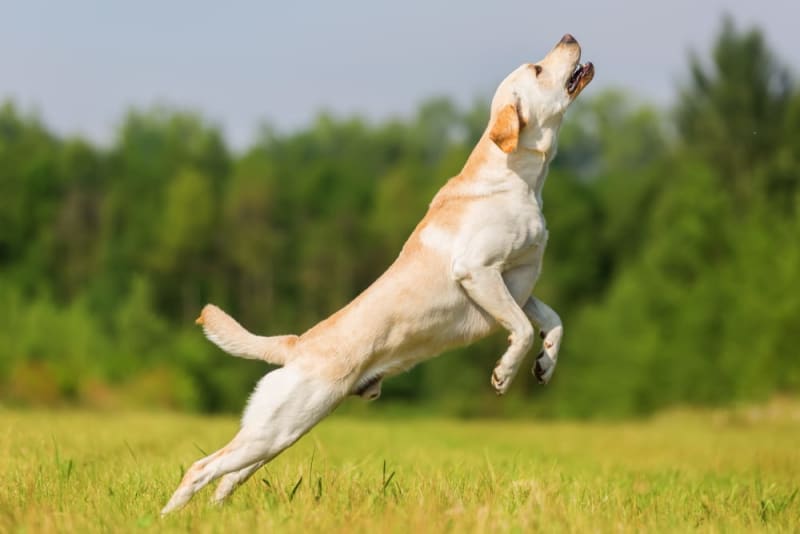As our furry friends age, it’s not uncommon for their hind legs to start weakening, causing them discomfort and mobility issues. In this article, we will discuss some common causes of hind leg weakness in senior dogs and provide advice on how to improve and maintain their leg strength. If you have an older dog who is experiencing difficulties with their hind legs, read on to learn more about how you can help them regain their vitality.
Common Causes of Hind Leg Weakness in Senior Dogs
There are several factors that can contribute to the weakening of a dog’s hind legs, especially as they age. Here are some of the most common causes:
Arthritis
Similar to humans, dogs can develop arthritis, especially in their back legs. Osteoarthritis, a type of arthritis that affects the joints, can make movement painful for your furry companion. Look out for symptoms such as difficulty climbing stairs or walking, bunny hopping while moving, and changes in muscle development. If you notice any of these signs, it’s best to take your dog to the vet for a check-up.
Hip Dysplasia
Hip dysplasia is a condition that can affect a dog’s balance and, in more severe cases, lead to osteoarthritis. This condition is more common in larger dog breeds such as German Shepherds, Labrador Retrievers, Saint Bernards, and Great Danes. While genetics play a significant role, factors like size, weight, and overuse can also contribute to hip dysplasia.
Canine Degenerative Myelopathy
Keep an eye out for signs of degenerative myelopathy, a condition that affects the nerves and can cause your dog’s hind legs to slip out from under them. Symptoms of degenerative myelopathy include quivering hind legs, hind legs coming together while standing, and feet positioned at unusual angles. Certain breeds, such as Boxers, German Shepherds, Cardigan Welsh Corgis, and Rhodesian Ridgebacks, are more susceptible to this condition.
Diabetes
Diabetes can also lead to weakness in a dog’s hind legs. Insufficient insulin production in their body can result in abnormal blood sugar levels. Watch out for signs such as increased thirst and hunger, incontinence, and unexplained weight loss. If you suspect your dog has diabetes, it’s crucial to seek advice from a veterinarian and have a blood test done for a proper diagnosis.
Fibrocartilaginous Embolism
Fibrocartilaginous embolism (FCE) occurs when a small piece of cartilage blocks the bloodstream, causing temporary hind leg restriction and pain. This condition is more common in larger dog breeds, including German Shepherds and Irish Wolfhounds.
Limited Mobility
If your pet requires surgical intervention, they may need to take it easy for a while. This temporary reduction in activity is essential for their complete and successful recovery.
Strengthening Your Senior Dog’s Hind Legs
Once you have identified the underlying cause of your dog’s hind leg weakness and have sought medical advice, there are several non-medical actions you can take to aid their recovery and improve their leg strength. Here are some suggestions:
- Take your dog for brief yet consistent walks on a daily basis. Gradually increasing activity can help restore and strengthen their hind leg muscles.
- Provide your dog with opportunities to swim in a safe environment. Swimming is a low-impact activity that can work their muscles and improve overall strength.
- Ensure your dog maintains a healthy weight by feeding them a balanced diet with lean, protein-rich foods. Excess weight can put strain on their legs and make them weaker.
- Consider giving your dog supplements that contain Omega-3 fatty acids. These supplements can help reduce inflammation and provide additional nutritional support to aging joints.
- Explore alternative treatments such as acupuncture and regenerative therapy, which can help reduce inflammation and alleviate pain associated with limited mobility.
Alleviating Pain & Discomfort
If your dog’s hind legs are too weak to perform strengthening exercises, there are options available to improve their quality of life and reduce discomfort. Mobility aids such as wheelchairs, rear-lifting harnesses, or hip braces can provide support and enable your dog to enjoy an active lifestyle, particularly during the warmer months. Regular check-ups with a veterinarian are also important to catch any health problems early and keep your older dog feeling their best.
Frequently Asked Questions
Q: What are the signs of hind leg weakness in dogs?
A: Signs of hind leg weakness include leg giving out, difficulty walking or climbing stairs, changes in muscle development, and unusual leg movements.
Q: How can I help my older dog regain strength in their hind legs?
A: Gradual exercise, swimming, maintaining a healthy weight, and considering supplements can all aid in strengthening your older dog’s hind legs.
Q: Are there any mobility aids available for dogs with weak hind legs?
A: Yes, there are various mobility aids such as wheelchairs, rear-lifting harnesses, and hip braces that can provide support and improve your dog’s quality of life.
Conclusion
As our canine companions age, it’s important to pay attention to their hind leg strength and take proactive steps to maintain their mobility. By understanding the common causes of hind leg weakness and implementing strengthening exercises, a healthy diet, and potentially alternative treatments, you can help your senior dog continue to enjoy an active and comfortable life. If you have any concerns about your older dog’s hind legs, don’t hesitate to reach out to our veterinarians in Concord for expert advice and assistance.
Contact our Concord vets to book an exam for your senior dog.
